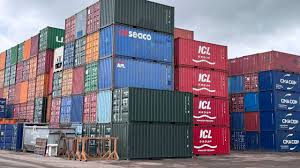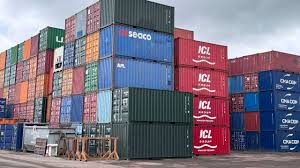The cryptocurrency revolution is built on powerful technology, and at the heart of Bitcoin’s success lies Bitcoin rigs. These machines are not just computers; they are highly specialized setups designed to secure the Bitcoin network and reward miners for their efforts. Over the years, Bitcoin rigs have evolved from simple desktop computers to advanced mining farms, becoming the backbone of the world’s largest cryptocurrency.
In this blog, we’ll explore what Bitcoin rigs are, their evolution, types, benefits, challenges, and their role in shaping the future of digital finance.
What Are Bitcoin Rigs?
A Bitcoin rig refers to the hardware setup used to mine Bitcoin. Mining involves solving complex mathematical puzzles known as “hashes” to validate transactions on the blockchain. Each time a puzzle is solved, the miner adds a new block to the Bitcoin blockchain and receives a reward in BTC.
Early Bitcoin enthusiasts mined using standard CPUs, but as the network grew and the mining difficulty increased, rigs became more advanced. Today, specialized rigs are essential to remain competitive in the mining ecosystem.
The Evolution of Bitcoin Rigs
The journey of Bitcoin rigs is a story of constant innovation.
-
CPU Mining – In Bitcoin’s early days (2009–2010), enthusiasts mined using their personal computers’ CPUs. This required minimal investment but produced low rewards.
-
GPU Mining – Around 2011, miners discovered that GPUs (graphics cards) could process hashes much faster than CPUs. GPU rigs became popular because they delivered higher hash rates and were more energy efficient.
-
FPGA Mining – Field-Programmable Gate Arrays provided a bridge between GPU rigs and ASICs. They offered improved efficiency but required technical expertise to operate.
-
ASIC Mining – The modern standard, Application-Specific Integrated Circuits are designed solely for Bitcoin mining. ASIC rigs outperform CPUs and GPUs by massive margins, making them the go-to solution for serious miners.
This evolution reflects Bitcoin’s growth from a niche project into a global financial network.
Types of Bitcoin Rigs
Today’s Bitcoin rigs can be categorized into several types:
1. GPU Rigs
Though GPUs are less efficient for Bitcoin, they are still popular among altcoin miners. A GPU rig consists of multiple high-performance graphics cards connected to a motherboard. While not profitable for Bitcoin mining in 2025, they remain versatile.
2. ASIC Rigs
ASIC rigs dominate the Bitcoin mining landscape. They are purpose-built machines designed specifically for Bitcoin’s SHA-256 algorithm. Models like the Antminer S19 XP and Whatsminer M50S are capable of producing hash rates in the hundreds of terahashes per second (TH/s).
3. Cloud Mining Rigs
For those unable to afford physical rigs, cloud mining offers an alternative. Here, individuals rent computational power from large mining farms. While convenient, it carries risks such as hidden fees and unreliable providers.
4. DIY Rigs
Some miners still build custom rigs by combining GPUs, motherboards, cooling systems, and power supplies. While not as powerful as ASICs, DIY rigs give flexibility and control over hardware.
Benefits of Bitcoin Rigs
Bitcoin rigs offer several advantages for miners and the broader blockchain ecosystem:
-
Network Security – Rigs validate transactions and secure the blockchain against fraud.
-
Decentralization – By enabling individuals worldwide to mine, rigs keep Bitcoin decentralized.
-
Profitability – For efficient miners, rigs can generate passive income through BTC rewards.
-
Innovation – Mining technology has spurred innovation in cooling systems, renewable energy, and hardware design.
Challenges of Using Bitcoin Rigs
While Bitcoin rigs are powerful, they also present challenges:
-
High Energy Costs – ASIC rigs consume significant electricity, making mining expensive in areas with high power rates.
-
Heat and Noise – Mining rigs generate substantial heat and noise, requiring cooling systems and ventilation.
-
Initial Investment – A modern ASIC rig can cost thousands of dollars. Setting up a mining farm involves heavy upfront capital.
-
Competition – With global mining farms, competition for block rewards is intense. Smaller miners often struggle to stay profitable.
The Role of Bitcoin Rigs in the Future
As Bitcoin adoption grows, rigs will continue to play a vital role. Several trends are shaping the future of Bitcoin rigs:
-
Energy Efficiency – New ASIC models focus on maximizing hash power while reducing electricity use.
-
Eco-Friendly Mining – Miners are shifting toward renewable energy sources such as hydro, wind, and solar to cut costs and reduce environmental impact.
-
Mining Pools – More miners are joining pools to share resources and increase chances of earning rewards.
-
Global Relocation – Mining operations are moving to regions with cheap electricity, like parts of North America, Central Asia, and Northern Europe.
Popular Bitcoin Rigs in 2025
Some of the most reliable Bitcoin rigs on the market today include:
-
Bitmain Antminer S19 XP – Known for high efficiency and performance.
-
MicroBT Whatsminer M50S – A strong competitor to Bitmain, favored for durability.
-
Canaan Avalon 1366 – Offers solid performance with competitive pricing.
These rigs are used by both hobbyist miners and large-scale mining farms.
Final Thoughts
Bitcoin rigs are more than just machines; they are the foundation of the Bitcoin ecosystem. From securing the blockchain to powering decentralization, rigs ensure that Bitcoin continues to function as a trustless, borderless financial system.
While mining is not without its challenges—high costs, noise, and intense competition—the evolution of rigs demonstrates resilience and innovation. As Bitcoin moves toward mass adoption, rigs will remain critical in shaping the cryptocurrency’s future.
For enthusiasts, businesses, and institutions, investing in the right rig can mean tapping into the very core of the Bitcoin revolution.



